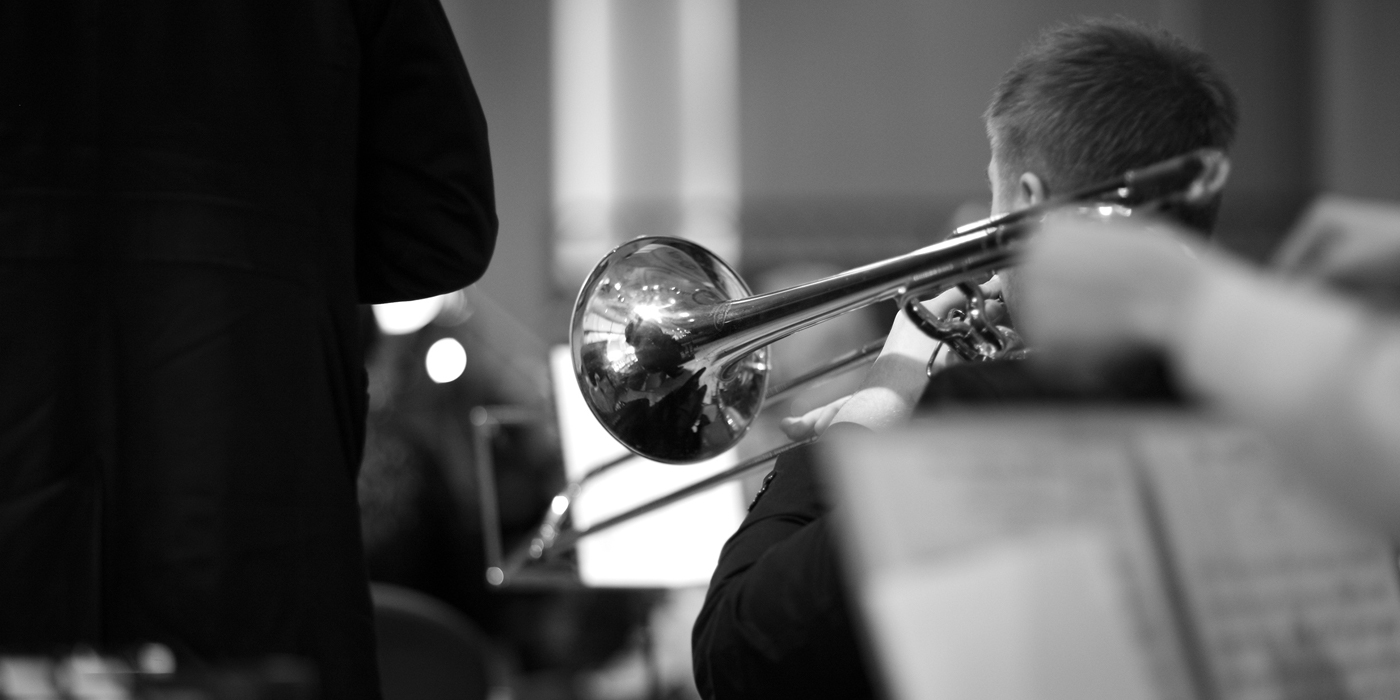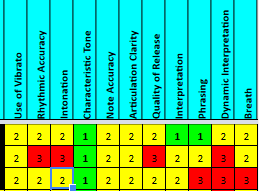
I have heard the following comment many times, from many judges’ recordings, from many festivals:
“I hope my comments were helpful.”
In this context, this comment has always made me wonder. Why would anyone ever attend a festival without making changes that benefit their students? As a teacher, do you end your lesson with the same comment? Think about accountability. What impetus do we need to incite change in ourselves and our students?
Using Data to Drive Instruction
“Data! Data! Data! I can’t make bricks without clay!” – Sir Arthur Conan Doyle
The quote’s expectations might seem obvious, but if you do not know what clay is, how do you know how make a brick? Now substitute some music terms in the quote above:
- I can’t make intonation without…
- I can’t make a good sound without…
- I can’t make a release without…
Think about recent comments you have made to your students. What was the accountability for your comments? Do your students value grades or do they value learning? When students become invested in their learning, the grades will come. In order to encourage students to become invested in their learning, we should provide them with those expected steps.
Examples of how to get data from performances can include rehearsal/concert/festival recordings, playoff tests, and student recordings. There are many ways to evaluate music in and out of your classroom.
Using Analytics
As a teacher, I have spent my life wanting and expecting the most out of students. Collecting data and using it to guide my instruction has been extremely helpful. For example, rather than teach a particular release in a piece of music, I have personally found it more beneficial to work on releases themselves though expectations and practice. The goal would be to work on making them apply to all releases in solo or ensemble work and not just in a particular place. The same can be said for dynamics, phrasing, stylistic interpretation, or any musical skill set.
What I did to achieve a goal for my students and ensemble was to create a collection of data sets and analyze them in all student performances. Each student’s performance of a skill set helps me determine student ability and thus the ability of my ensembles.
Rubrics
Rubrics have become an integral part of education. They benefit students by clearly indicating what is expected from them. Below is an example of a rubric designed to help evaluate a student’s use of dynamics or an ensemble’s use of dynamics for an exercise, passage, or entire work. In Arizona, a rating of Superior is commonly known as a “1”. For this reason, the following rubric may appear upside down in its point strategy and can be easily modified to make the Superior be the highest point value.

Imagine a student submitting a recording or performing for evaluation with a rubric of expectations for them. The expectation would be clear for both the evaluator and the performer. When building expectations, you could use as few or as many sets of criteria for students as you deem helpful. For students, the goal becomes to better learn how and what to practice as opposed to simply playing through the music in isolation.
Standards Based
Recent changes to NAfME and state standards have given local school districts more freedom to define specific learning objectives. Since most evaluators are not musicians, it is important that you map out skills in easy-to-evaluate components. Performance skills are perfect for this. The chart below represents a set of criteria for a student performance:

Here you can see three different sets of students and their outcome scores based on a rubric. Much like a festival assigns a rating, a set of standards can help students better understand how to measure their success and give them direction upon what they need to focus on.
Qualitative vs. Quantitative
Music is very much qualitative in nature:
- Tone quality (qualitative)
- Musicality (qualitative)
- Interpretation (qualitative)
Just think about what it would be like if every student knew how, and had the necessary resources, to do everything you expected of them. Data can help us make qualitative judgments by providing learners with quantitative data. When playing music, getting students to own the correct notes and rhythms is key:
- Correct notes in a scale (quantitative)
- Correct rhythms in a passage (quantitative)
- Correct tempo (quantitative)
Going Beyond Notes and Rhythms
When training future musicians, we are asking them to juggle many things. Notes, rhythms, attacks, releases, phrases, dynamics should be the expectation of every student, but what tools can we give them to refine these areas on their own? Creating quantitative tasks for students, and implementing them with a learning management system like Google Classroom or Canvas can be an extremely helpful way to get students to own their learning and their practice.
Benefits of Flipping the Classroom
For the ensemble, rehearsal is the primary way for learning. Balance, blend, and dynamics are examples of skill sets that need to be addressed in rehearsal via instructor feedback. In my opinion, if the students have the notes, rhythms, attacks, releases, and dynamics in place before they arrive, then as a director or an ensemble, I can start to rehearse music as opposed to teach music.
For the individual, if I can find a way to flip my classroom and get students to not only be prepared for rehearsal every day, but also have skill sets in place, then I have to be creative in how I measure these skill sets. One effective method I have found is memorization tests. You can either have students perform a section for you or have them submit a video (or a SmartMusic assignment) of a passage for evaluative feedback. This can focus on simple things such as notes and rhythms, or it can be for concepts such as tone, dynamic contrasts, or phrasing. The important part is to provide the impetus for students to become engaged in their learning.

Who Has the Onus?
“You can teach a student a lesson for a day; but if you can teach them to learn by creating curiosity, they will continue the learning process as long as they live.” – Clay P. Bedford
Placing the onus on the students is key. What would your program be like if every student practiced, or had private lessons? While not every student can afford private lessons, if your pedagogy can help encourage students to succeed both in and out of the classroom, then perhaps how we offer opportunity is just as important as the rehearsal itself. Sometimes when students play for me I will create a system to randomly select their evaluation criteria. Correct notes, correct rhythms, articulation, and dynamics are popular when doing this. I want my students to reflect in their practice and to focus on more than just the notes and rhythms as an indicator of their success.
In order to give your students the tools they need, rubrics, data, and expectations can be powerful tools.
Learning Takes Place in the Reflection
Someone once said to me that learning takes place in the reflection. I have lived the statement since the day I heard it. Data is the opportunity to make students reflect on what they need to know.
I hope my comments were helpful.